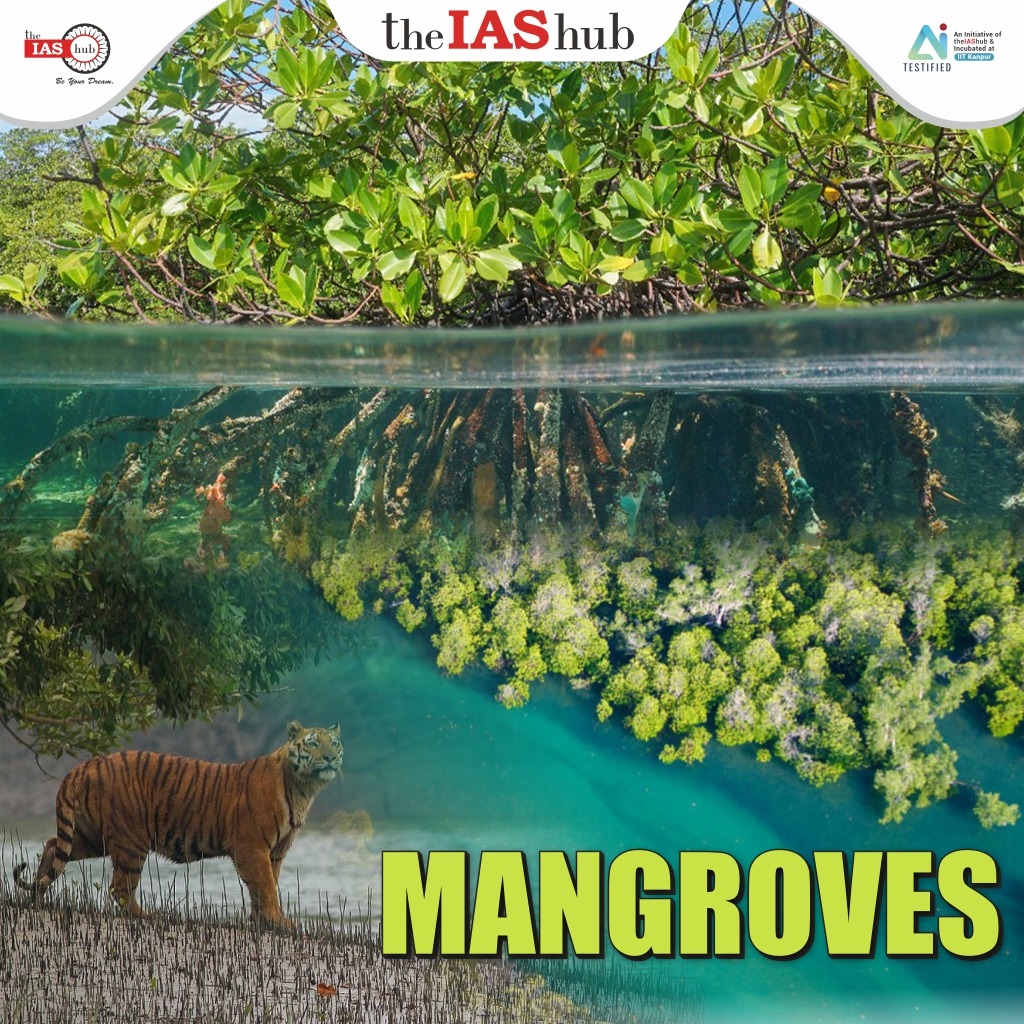A mangrove is a tiny tree or shrub that grows along coasts and establishes itself in saline sediments, frequently beneath water. The term "mangrove" can apply to either the mangrove swamp's trees and bushes or the ecosystem as a whole.


A mangrove is a tiny tree or shrub that grows along coasts and establishes itself in saline sediments, frequently beneath water.
The term "mangrove" can apply to either the mangrove swamp's trees and bushes or the ecosystem as a whole.
Threats to mangroves:
Initiatives taken:
MISHTI (Mangrove Initiative for Shoreline Habitats and Tangible Incomes) scheme
Introduction: The Mangroves - MISHTI (Mangrove Initiative for Shoreline Habitats & Tangible Incomes) scheme is a comprehensive program initiated by the Ministry of Environment, Forest and Climate Change in India. It aims to promote the development of mangroves across 11 states and 2 union territories, focusing on conservation, sustainable livelihoods, and ecological restoration.
Components:
Need:
|
Sundarbans Mangrove Forest, Bangladesh Successful community-based conservation in the world's largest mangrove forest. |
Conclusion
The Mangroves - MISHTI scheme stands as an innovative endeavor that combines environmental conservation, sustainable development, and community engagement. By fostering ecological resilience, promoting green livelihoods, and leveraging cutting-edge approaches, this scheme paves the way for a greener and more prosperous future for coastal regions in India.
|
Initiatives related to Mangroves
|


Refine your answer writing skills and elevate your UPSC preparation with personalized support and expert feedback.
Fill out the form to get started with the program or any other enquiries !








Are you dreaming of becoming an IAS officer? Then, IAShub can be your best guide. It is one of the Best IAS Coaching in Delhi. Many students who want to clear the UPSC exam join IAShub for learning. The institute gives both online and offline classes. Their teachers are experienced and helpful. They easily explain every topic. Students also get notes, tests, and tips to do well in the exam.
IAShub is in Delhi and is trusted by many UPSC students. It offers coaching for every part of the UPSC exam – Prelims, Mains, and Interview. The classes are simple and easy to understand. The teachers are experts and guide students in the right way. IAShub is also known for its helpful notes, test series, and answer-writing practice. IAShub is the best coaching in Delhi and also gives UPSC Online Classes. This helps students from any place in India to learn. The online classes are live and also recorded. So, students can watch them anytime. These classes cover the full UPSC syllabus.
Here are some important services provided by IAShub:
The UPSC Civil Services Exam has three parts:
This exam is tough, but with the right guidance, it becomes easy to manage. Students must study smart and stay regular.
IAShub supports students from the beginning to the end. It gives the right books, tests, and notes. The classes are easy to follow, and the teachers are always ready to help. Students get personal doubt sessions too. The test series and answer checking help students learn where they need to do better. Also, free study materials save time and money.
IAShub also guides students during the final stage – the interview. Experts take mock interviews and give useful tips. This full support makes IAShub one of the best IAS coaching in Delhi.